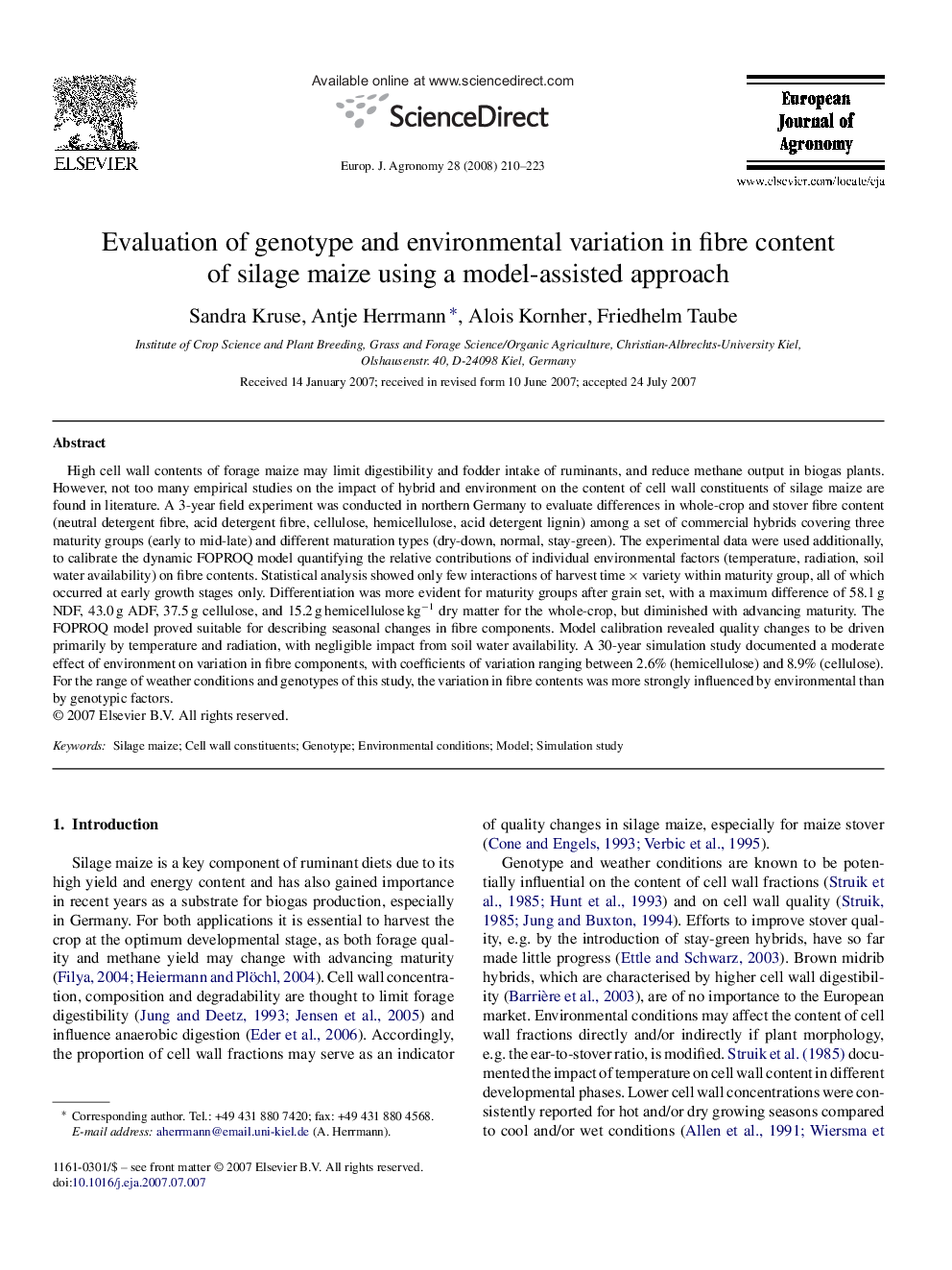| کد مقاله | کد نشریه | سال انتشار | مقاله انگلیسی | نسخه تمام متن |
|---|---|---|---|---|
| 4509454 | 1624519 | 2008 | 14 صفحه PDF | دانلود رایگان |

High cell wall contents of forage maize may limit digestibility and fodder intake of ruminants, and reduce methane output in biogas plants. However, not too many empirical studies on the impact of hybrid and environment on the content of cell wall constituents of silage maize are found in literature. A 3-year field experiment was conducted in northern Germany to evaluate differences in whole-crop and stover fibre content (neutral detergent fibre, acid detergent fibre, cellulose, hemicellulose, acid detergent lignin) among a set of commercial hybrids covering three maturity groups (early to mid-late) and different maturation types (dry-down, normal, stay-green). The experimental data were used additionally, to calibrate the dynamic FOPROQ model quantifying the relative contributions of individual environmental factors (temperature, radiation, soil water availability) on fibre contents. Statistical analysis showed only few interactions of harvest time × variety within maturity group, all of which occurred at early growth stages only. Differentiation was more evident for maturity groups after grain set, with a maximum difference of 58.1 g NDF, 43.0 g ADF, 37.5 g cellulose, and 15.2 g hemicellulose kg−1 dry matter for the whole-crop, but diminished with advancing maturity. The FOPROQ model proved suitable for describing seasonal changes in fibre components. Model calibration revealed quality changes to be driven primarily by temperature and radiation, with negligible impact from soil water availability. A 30-year simulation study documented a moderate effect of environment on variation in fibre components, with coefficients of variation ranging between 2.6% (hemicellulose) and 8.9% (cellulose). For the range of weather conditions and genotypes of this study, the variation in fibre contents was more strongly influenced by environmental than by genotypic factors.
Journal: European Journal of Agronomy - Volume 28, Issue 3, April 2008, Pages 210–223